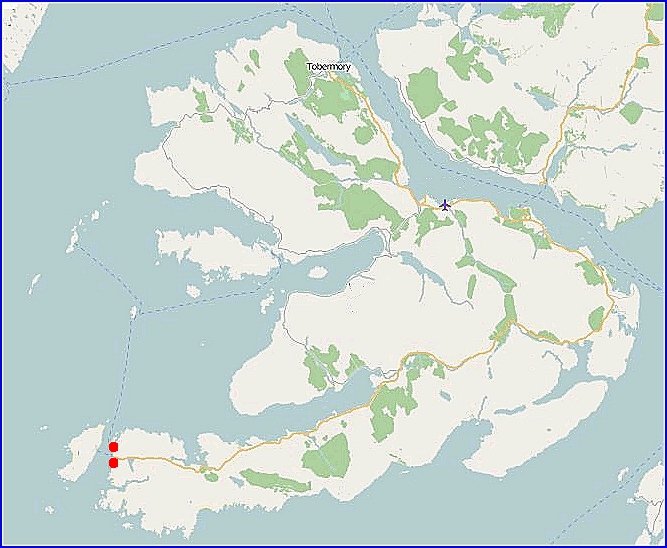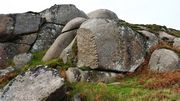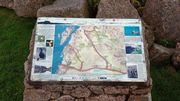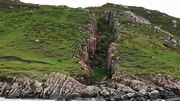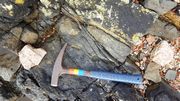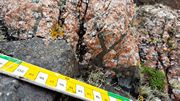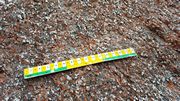Fionnphort in the SW of mull at the end of the peninsula called the Ross of mull is a great place to see the well exposed Ross of Mull Granite. The pink granite looks very distinctive , especially in the rays of the setting sun where its pink colour (due to the presence of potassium feldspar) is very striking. There are two locations that are well worth a visit. The first is just south of the ferry slipway, the other is the old quarry at Tormore just north of the village.
Fionnphort Slipway Exposures:
From the ferry slipway, it is only a short distance to the south where some very interesting intrusions of a dark grey rock cutting the granite can be seen. The rock is a diorite and is seen to inter-digitate with the contrastingly pink granite. Large crystals of K-feldspar can be seen in the grey material. these are xenocrysts and it is reckoned that the pink granite was not completely solidified when the grey dioritic rock was intruded. Crystals of the pink K-feldspar in the granite were broken of and incorporated in the diorite.
Fionnphort. Looking over to Iona. Ross of Mull Granite on the RHS and forming the large split boulder on the shore
Just south of the slipway, intrusions of diorite (grey) cut across the granite (pink)
Near this location there is also an obvious fault - the band of dark grey rock has a very obvious displacement across a small steep sided gully. In the bed of the gully can be seen a small dyke - several calcite veins are visible nearby.
Tormore Quarry:
Tormore Quarry lies to the north of Fionnphort and is accessible by a muddy track from the top of the main car park or else by a rough road which runs past the Ninth Wave Restaurant. Large blocks of granite lie in the quarry and it is a great place to see evidence of how the blocks were cut and transported. The top of the quarry has superb views to the north and west and looks straight over to Iona.
View from upper part of quarry down to the pier. Iona in the distance
Several dykes of Permian age cut through the granite and one is visible as a large dark feature in the quarry wall. Similar dykes can be found on the shore. These tend to run E-W in contrast to the dykes of the Mull Swarm which run NW-SE. Aplite veins of much finer grained material are also found. These are best seen just offshore on the island of Eilean nam ban, but you need a boat to get out there. The Staffa tourist boat passes close to this island and the aplite veins are clearly visible from it. The granite generally appears to dip into the Sound of Iona at about 40 degrees. This feature is very noticeable in the Fionnphort slipway. Look north across the bay - it is unmistakable.
There is a small cave "Uamh nam Marbh" (the Cave of the Dead) where bodies were kept before being taken to Iona for burial. it is above the shore just south of the quarry pier.
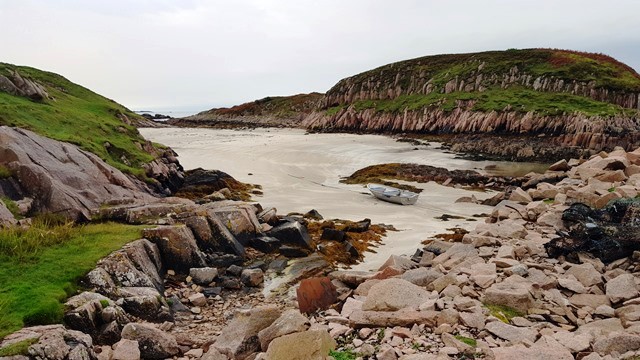
At the shore below the quarry
